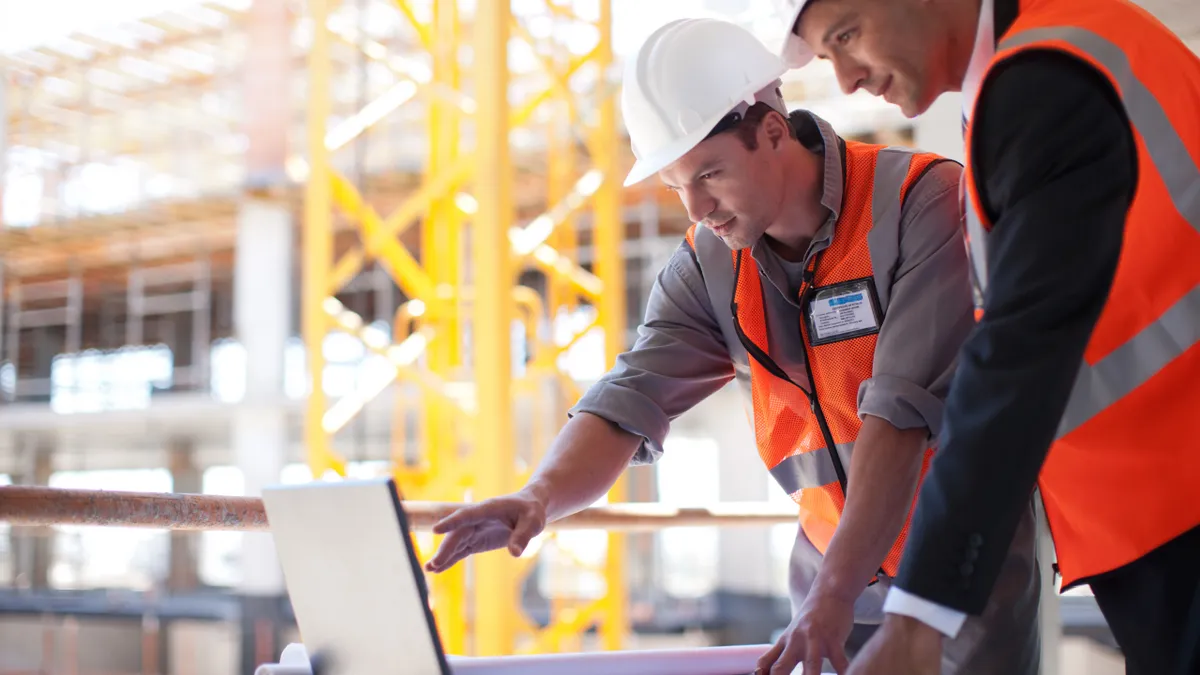Construction remains essential in many states, meaning work on jobsites can continue. But CDC guidelines and local governments emphasize the importance of maintaining proper health procedures such as regularly washing hands and maintaining a safe social distance even while working.
In response, several construction apps have implemented or updated programs that allow site managers and workers to have an idea of ongoing social distancing practices to ensure everyone on site remains safe, including before and after coronavirus symptoms or diagnoses.
Genda Tech
Israel-based construction tech company Genda Tech had begun to expand to the United States prior to the virus, said Erez Dror, CEO and co-founder. Now, dealing with a handful of sites in Texas, the application is using location tracking to ensure workers maintain social distances, as well as conduct contact tracing following positive coronavirus cases.
When workers arrive on jobsites, they are required to fill out a health questionnaire on the Gendar app, Dror said. If no red flags are raised, they are able to work while monitored by battery-powered tracking beacons placed onsite that ensure workers stay 6 feet apart, or another predetermined distance.
Since social distancing can be challenging on a construction site, Dror said, Genda allows site managers to customize a limit on the number of workers in a given space, and when that is violated or changed, a notification is sent both to the workers in the area and the site manager in real time.
By using the tracking technology, superintendents can identify workers who were in close contact with someone onsite who had been deemed affected based on questionnaire results, and in what location, and work to clean the area or inform workers they need to quarantine.
The new safety notifications were rolled out on top of the other safety capabilities of Genda Tech, which Dror said is talking to more companies in North Carolina, Washington and the United Kingdom.
Smartvid.io
Earlier this month, construction software provider Smarvid.io announced an addition to the capabilities of Vinnie, the software’s artificial intelligence system. Using cameras onsite, Vinnie is able to identify workers, as well as potential safety hazards, such as workers without gloves, hats or proper fall protection.
Vinnie now can update site managers in real time, as well as in a daily PDF report, when workers have been within 6 feet feet of one another. The images allow specific moments to be documented and shown to all stakeholders, to ensure the minimum safe distance is maintained.
The Predictive Analytics Strategic Council, a group made up of contractors using Vinnie for identifying potential safety incidents, was named Construction Dive’s Innovator of the Year in 2019.
Kwant.ai
Construction analytics platform Kwant.ai developed a COVID-19 response plan for its clients. Using wearable tech sensors, Kwant.ai, like Genda, can set a specific threshold for a number of workers within a given space, notify them if they come within a certain distance and perform contact tracing to investigate those who may have been diagnosed or displaying symptoms, according to Kwant.ai CEO and co-founder Niran Shrestha.
The tracking can penetrate walls, and use sensors to determine how many workers were in a crowded space like an elevator or restroom. Using alarms, visual cues or text messages, Kwant.ai notifies workers of a potential hazard. Kwant.ai’s app and software also allows for specific scheduling to maintain who is onsite.
The software takes around a day for installation to allow it to be fully up and running.
Triax Technologies
Last week, Triax Technologies introduced wearable IoT sensors to help workers maintain social distances. A device, usually affixed to a hard hat or lanyard, can detect close interactions and sound an alarm that gets progressively louder if not responded to, according to Triax President and CEO Robert Costantini. The alarm can be dismantled for short amounts of time when short, close work is essential.
The data captured by the IoT devices is stored and allows for contact tracing. Contractors can use Proximity Trace data to determine who had been close to a diagnosed worker and the duration. At the same time, Spot-r, a different Triax IoT system, can measure worker density on project spaces, Constantini said.





















